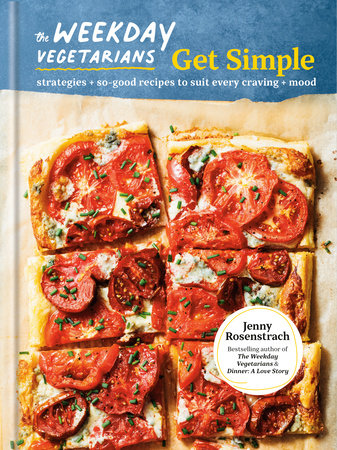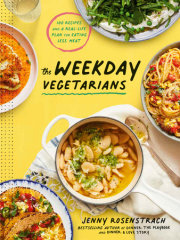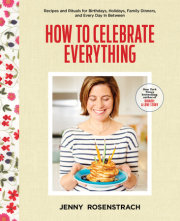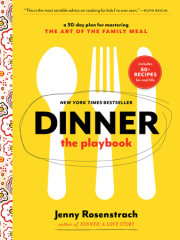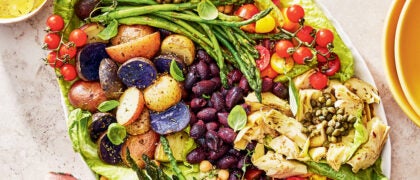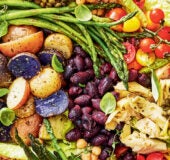IntroductionI had a burger last night. The beef was Vermont-bred, grass-fed, and it was dripping with decidedly nonlocal, nonorganic American cheese and wedged inside a potato bun whose ingredient list is longer than this paragraph. We make burgers when our two daughters come home from college begging for them, or on the occasional weekend night when we feel like eating something special (in that TGIF kind of way) and don’t feel like spending money on a meal we could cook better at home. My husband, Andy, has mastered the smash burger technique, using paperthinly sliced sweet white onions to steam the meat as it sears in the pan, yielding the kind of burger that conjures up the family’s first visit to In-N-Out Burger on a 2012 California trip, but also the 1970s of my youth when it was McDonald’s night in my house. Have you had a smash burger lately? Wow, they taste good. And wow, are they easy. When burgers are on the menu, it’s just so simple to figure out dinner: animal protein at the center of the plate + vegetable = done. No-brainer.
I’m sure you’re thinking that this is a very confusing way to begin a vegetarian cookbook. Or maybe not. If you read the first volume of
The Weekday Vegetarians, you know that plantforward eating is the default mode when I cook during the week—but it’s also punctuated by burgers and take-out shrimp tempura and pan-seared pork chops on the weekends. Because yes, we are committed to dialing back our meat consumption for all the reasons you’d expect (feeling better, saving money, combating climate change), but also: We can’t quite shake our love for a roast chicken with mashed potatoes and gravy for a Sunday dinner or sitting down to Marcella Hazan’s famous Bolognese on a wintry night, or salmon on the grill in July, or . . . well, you get the picture.
But I bring up that burger because I was, yet again, struck by how straightforward dinner is when meat is at the center of the plate. And I didn’t really have to do anything extra to elevate it. I mean, let’s face it: There’s no elevating a burger, really. It’s going to taste amazing no matter how you But, with a little mindfulness, you know what else tastes amazing? The vegan misomushroom tacos we topped with pickled cabbage for last Monday’s dinner, a flavor bomb kind of meal that would feel just as right on a Saturday night spread. So was the creamy quinoa salad, loaded with sweet snap peas and scallions and mint and asparagus, all picked up at the farmers’ market in the last few weeks of May, when the good stuff finally starts to appear after a long, cold New York winter. And the crispy fried wedges we made with chickpea flour and feta and served with a sharp lemony arugula pesto. That meal lingered on my palate—in the best way—all through the next day, until dinnertime when we treated ourselves to a deep-red tomato and blue cheese tart, which, I’m not kidding, took less than 30 minutes to get on the table.
I know you’re not going to believe me, but once you get in the weekday vegetarian groove, those vegetable-forward dinners (plus all the others in this book) will become as second nature to you as flipping a ground beef patty. I’ve written the
Dinner: A Love Story newsletter and blog for fifteen years, and though the way I’ve eaten has changed a lot over that period, one thing has remained constant: My commitment to streamlining dinner and my commitment to helping readers and families see dinner as a source of pleasure instead of a source of hair-pulling and head-scratching and for-goodness-sakes-finishyour-broccoli-ing. This book continues in that tradition, highlighting all the ways vegetarian dinners can become less of a chore and more of a ritual that you can look forward to and feel good about every day. I didn’t name this whole operation
Dinner: A Love Story for nothing.
This was not the way I would’ve described dinner in our house when we first decided to pivot to more plantbased eating six years ago. For my entire tenure as a parent and cook up to that point, the way I had always thought about dinner was the way I thought about that burger: protein (almost always from an animal) first, everything else next. Without this default strategy, I felt a little lost, compensating for the centerstage chicken, pork, or beef with two or three extra vegetarian sideshow dishes (hence, two or three times as many pots and mixing bowls to clean up afterward) or breaking out an army of small appliances on a busy weeknight to chef up a many-ingredient sauce to help that tofu along. I don’t do this anymore. Once I got the basics down, I started to look at every meat-free main through my efficiency goggles and realized something important: There are ways to streamline almost every recipe, whether it means using the right store-bought ingredients to skip a time-consuming step, or using pots and prep bowls more than once to cut back on cleanup, or simply whisking up a double batch of vinaigrette or empanadas, so you save time for your future dinner-making self—economy of scale and all that. In the recipes that follow, I promise to point out all these strategies and ultimately convince you that vegetarian cooking is not about putting in more work. It’s about putting in more thought.
Copyright © 2024 by Jenny Rosenstrach. All rights reserved. No part of this excerpt may be reproduced or reprinted without permission in writing from the publisher.





